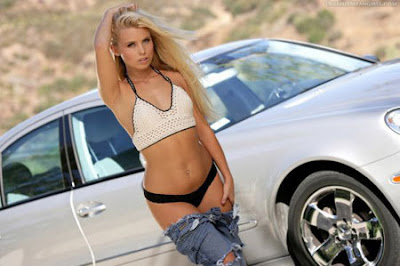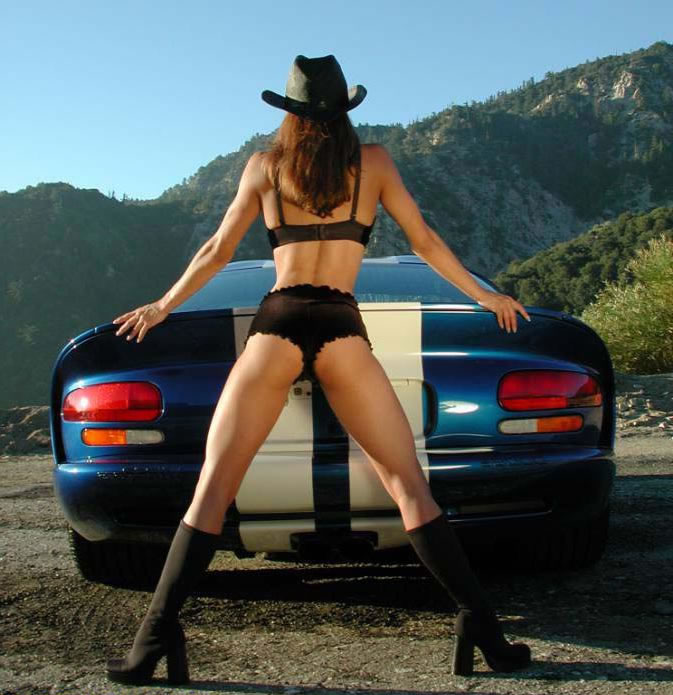|
|
|---|
Sunday, November 11, 2007
To know it is to love it, and to speak its name is to want it. We’re talking about—what else?—BMW’s mid-size monster, the M3.
The M3’s story is well-known. The mid-size terror debuted here in 1987 with a four-cylinder under its hood and a massive wing on its trunk, serving as the E30 3-series–derived homologation special for German Touring Car racing. It had a unique decklid, rear glass, fenders, and, well, just about everything else. That first M3 dominated racing series around the globe, and along with its six-cylinder E36- and E46-based successors, turned BMW’s M division into the place to go for ultimate performance from the showroom floor. In short, the M3 became an icon.
Now BMW’s taking the M3 to a whole new level.
The latest M3 is powered for the first time by a V-8, a 4.0-liter unit derived from the 5.0-liter V-10 found in the M5 supersedan as well as the M6 coupe and convertible. The 90-degree eight-holer will make 414 horsepower at 8300 rpm—the redline is only 100 rpm farther up the tach, so this thing is gonna wail—and 295 pound-feet of torque at 3900 rpm. The V-8 also boasts the usual top-shelf technologies such as double-VANOS variable valve timing and individual throttles for each cylinder.
The V-8 shares the V-10’s bore and stroke, 12.0:1 compression ratio, and aluminum construction. The crankcase is made from an aluminum-and-silicon alloy, and exposed silicon in each cylinder mitigates friction well enough that separate sleeves aren't required, saving weight. The entire engine actually weighs—thanks to the lightweight material and weight-saving measures—33 fewer pounds than the E46 M3’s iron-block inline-six, and the eight should push the new M3 to 60 mph in well under 4.5 seconds. With a mill this advanced, it’s not surprising that the block comes from the same foundry that supplies BMW with its Formula 1 engines.
Unlike the M5, where a conventional six-speed manual was offered only after M fans freaked out, a six-speed stick will be the standard transmission for the M3; a dual-clutch automated manual similar to VW/Audi's DSG will likely be an option later. BMW’s variable differential—with up to 100-percent lockup—keeps the power heading to the ground. The M3 will have, like the M5, a “power” button located next to the shifter. It won’t unleash an extra 100 ponies as in the big supersedan but will instead increase throttle response through heightened accelerator sensitivity—think of it more as a sport button than one that actually delivers more power.
The optional MDrive system will allow drivers to quicken the steering rate for the active-steering system. The M3 will also offer BMW’s electronic damper control that serves up three suspension settings, each more hard-core than the last. The M3 defaults all systems at start-up to the softest, least bad-ass settings, but a memory button on the steering wheel can store your favorites. According to BMW, weight stands at just under 3500 pounds—50 lighter than a 335i coupe—which is an increase of 70 or so pounds over the outgoing model, but we’d say the extra 81 horsepower more than makes up for the excess fat. Stopping the M3 will be 14.2-inch discs in the front and 13.8-inchers in back, all vented and cross-drilled.
The M3’s story is well-known. The mid-size terror debuted here in 1987 with a four-cylinder under its hood and a massive wing on its trunk, serving as the E30 3-series–derived homologation special for German Touring Car racing. It had a unique decklid, rear glass, fenders, and, well, just about everything else. That first M3 dominated racing series around the globe, and along with its six-cylinder E36- and E46-based successors, turned BMW’s M division into the place to go for ultimate performance from the showroom floor. In short, the M3 became an icon.
Now BMW’s taking the M3 to a whole new level.
The latest M3 is powered for the first time by a V-8, a 4.0-liter unit derived from the 5.0-liter V-10 found in the M5 supersedan as well as the M6 coupe and convertible. The 90-degree eight-holer will make 414 horsepower at 8300 rpm—the redline is only 100 rpm farther up the tach, so this thing is gonna wail—and 295 pound-feet of torque at 3900 rpm. The V-8 also boasts the usual top-shelf technologies such as double-VANOS variable valve timing and individual throttles for each cylinder.
The V-8 shares the V-10’s bore and stroke, 12.0:1 compression ratio, and aluminum construction. The crankcase is made from an aluminum-and-silicon alloy, and exposed silicon in each cylinder mitigates friction well enough that separate sleeves aren't required, saving weight. The entire engine actually weighs—thanks to the lightweight material and weight-saving measures—33 fewer pounds than the E46 M3’s iron-block inline-six, and the eight should push the new M3 to 60 mph in well under 4.5 seconds. With a mill this advanced, it’s not surprising that the block comes from the same foundry that supplies BMW with its Formula 1 engines.
Unlike the M5, where a conventional six-speed manual was offered only after M fans freaked out, a six-speed stick will be the standard transmission for the M3; a dual-clutch automated manual similar to VW/Audi's DSG will likely be an option later. BMW’s variable differential—with up to 100-percent lockup—keeps the power heading to the ground. The M3 will have, like the M5, a “power” button located next to the shifter. It won’t unleash an extra 100 ponies as in the big supersedan but will instead increase throttle response through heightened accelerator sensitivity—think of it more as a sport button than one that actually delivers more power.
The optional MDrive system will allow drivers to quicken the steering rate for the active-steering system. The M3 will also offer BMW’s electronic damper control that serves up three suspension settings, each more hard-core than the last. The M3 defaults all systems at start-up to the softest, least bad-ass settings, but a memory button on the steering wheel can store your favorites. According to BMW, weight stands at just under 3500 pounds—50 lighter than a 335i coupe—which is an increase of 70 or so pounds over the outgoing model, but we’d say the extra 81 horsepower more than makes up for the excess fat. Stopping the M3 will be 14.2-inch discs in the front and 13.8-inchers in back, all vented and cross-drilled.
Labels: Automobiles Reviews
Subscribe to:
Post Comments (Atom)






















0 comments:
Post a Comment